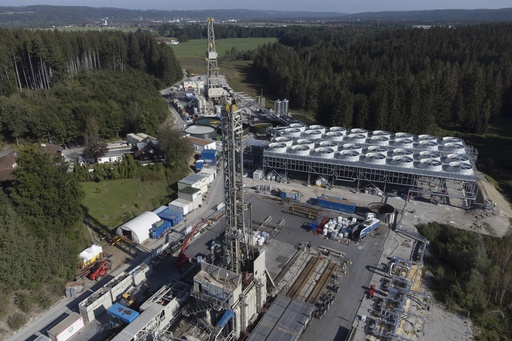
Residents of the German town of Geretsried have long sought a shift towards sustainable heating and electricity, favoring geothermal energy over traditional fossil fuel sources. About 15 years ago, their aspirations were thwarted when a drilling company was unable to locate sufficient hot water near the surface, resulting in a reliance on natural gas.
First Mayor Michael Müller, who has lived in Geretsried all his life, reminisced about that period, stating, “We gave up. We had big hopes.” However, the tide is turning as innovative geothermal companies are now applying advanced techniques to tap into deep, hot rock instead of only relying on hot water sources. One such company, Eavor, is on the brink of launching its first commercial power plant in Geretsried, potentially making the small town, with a population of around 26,000, a testing ground for future geothermal applications.
The International Energy Agency (IEA) is optimistic about the advancements in geothermal technology, acknowledging in a recent report that new methods are revealing vast potential for harnessing geothermal energy. The organization asserts that drilling deeper than 3 kilometers (approximately 2 miles) means that almost every country could access geothermal heat and electricity.
As IEA Executive Director Fatih Birol noted, geothermal has typically been a specialized energy source found in select regions, but he is confident that “geothermal can contribute to the global energy picture in an accelerated manner” soon.
Eavor is particularly interested in proving the viability of geothermal energy in Geretsried due to its previous setbacks. CEO John Redfern mentioned that the failed attempts at traditional geothermal systems painted the perfect backdrop for success. “Our whole point is that we want to have geothermal anywhere, everywhere,” he remarked, emphasizing that demonstrating the technology’s effectiveness in Geretsried is significant.
Germany is actively pursuing an energy transition away from fossil fuels, particularly in heating systems, which constitute a large portion of the nation’s carbon dioxide emissions. The geopolitical shift following Russia’s invasion of Ukraine in 2022 further emphasized the urgency to develop localized renewable energy sources over reliance on imported natural gas.
Eavor has an existing demonstration facility in Alberta, Canada, and the company is familiar with Geretsried, with team members having previous operational experience in the area. The project is expected to begin generating electricity in Geretsried this year, marking an essential milestone. Initially, it will focus on electricity generation before advancing to heat production as the town establishes a district heating framework.
District heating systems centralize heat generation and deliver it to homes and businesses. While many of these systems currently rely on fossil fuels, there are extensive networks in Europe providing heat to millions, according to Euroheat & Power. In the U.S., district energy systems are frequently found on college campuses, hospital centers, military installations, and larger urban areas. As concerns about climate change increase, some institutions are opting to convert from gas or oil to geothermal energy for their heating needs.
Eavor also holds a contract to supply heat for the city of Hanover, where coal is being phased out. The company is licensing its technology to utilities and other organizations aiming to reduce emissions and secure reliable energy, with significant investment from Japan’s Chubu Electric Power Company, which identifies ample geothermal potential but has few existing power plants.
So, how does Eavor’s geothermal innovation operate? The company drills two deep wells, approximately 4 kilometers (2.5 miles) down, and extends a network of lateral wells to maximize interaction with hot rock. This creates a closed-loop system, known as the “Eavor loop,” allowing water to circulate and harness geothermal heat. Unlike traditional fracking methods, this process does not involve hydraulic fracturing but instead relies on the natural process of hot water rising through an outlet well after being heated in the geological formations.
This hot water can service utility needs, heating about 36,000 homes, or be channeled to a power plant to produce steam for electricity generation. This approach operates without emissions that contribute to climate change.
Mayor Müller has emphasized the urgency of transitioning energy strategies now rather than waiting for the future. He asserted, “We want to remain future proof. So let’s start the future.”

